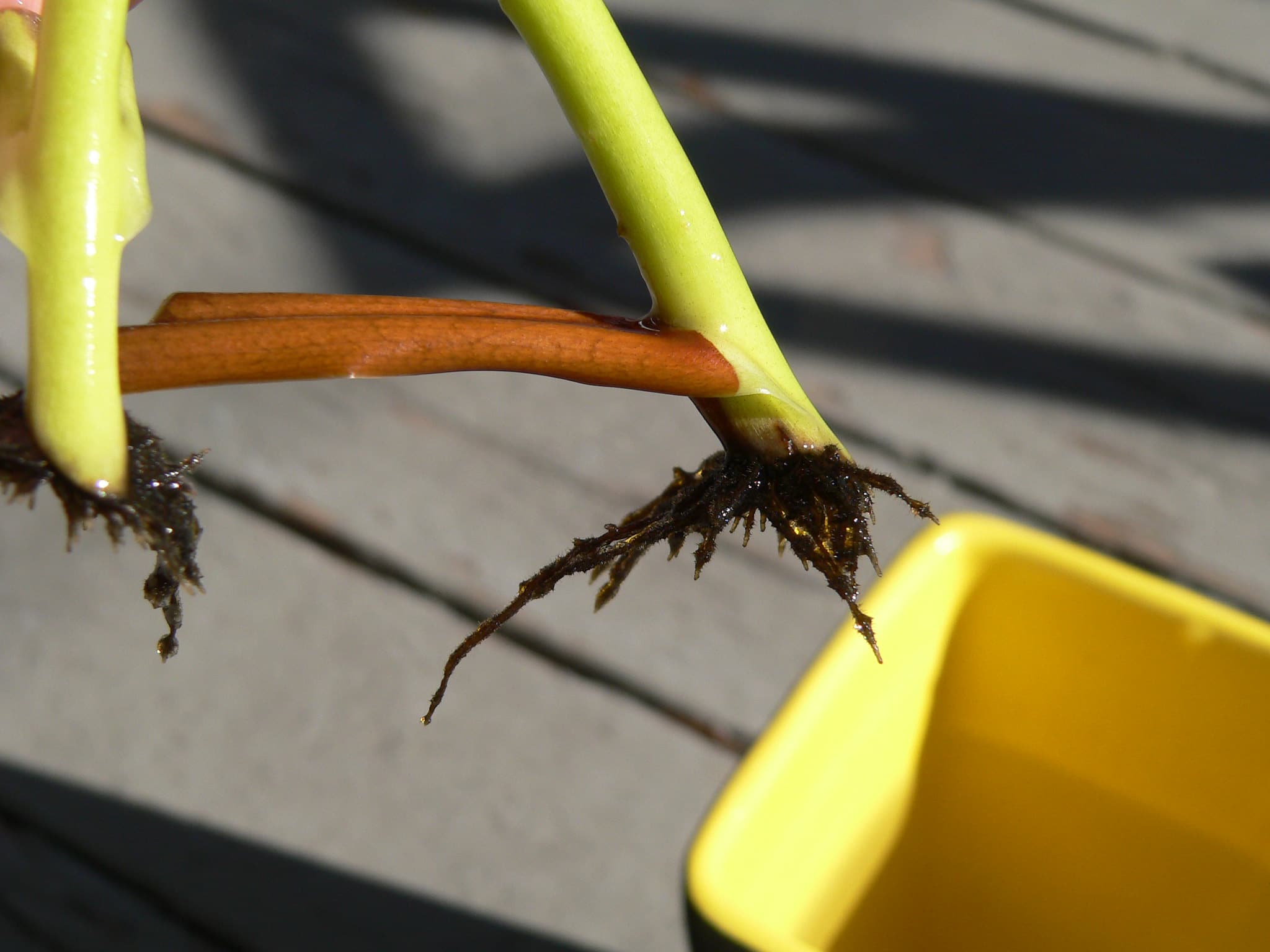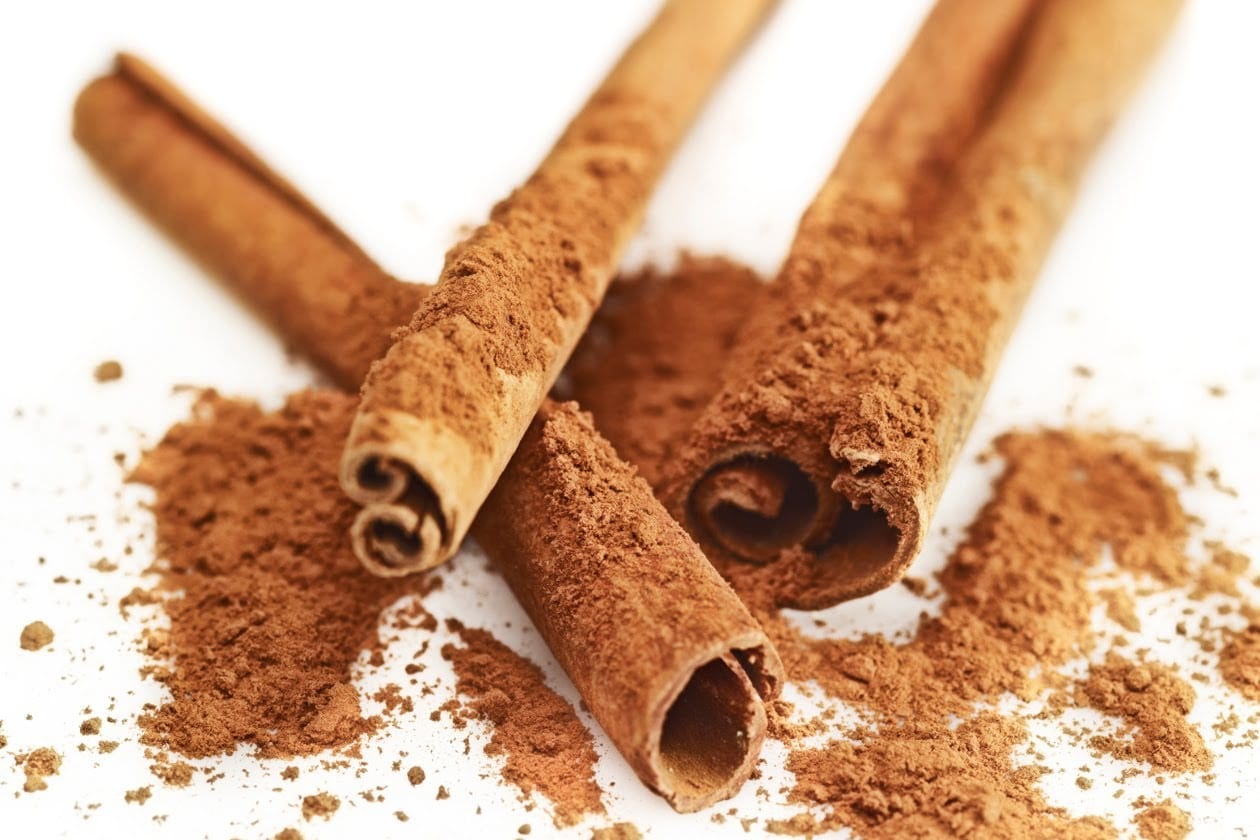
Image - Flickr / Keith Simmons
Would you like to obtain new plants by cuttings in a simple way and have guarantees of success? Then I recommend that you acquire rooting hormones, which you can find in nurseries and garden stores. Whether in powder or liquid, used correctly they can be very helpful.
Thus, your cutting will be able to take out new roots in less time than you imagine.
What are rooting hormones and when are they used?

Image - Wikimedia / Kumar83
Rooting hormones are nothing more than auxins. Auxins are plant hormones, also called phytohormones, that regulate plant growth. They are synthesized in the meristematic regions of the apex of the stems, from where they move to other parts of the plant.
They have long had various uses in agriculture and gardening, for example:
- Favor the fall of the fruits: in some crops it is necessary for a certain amount of fruits to fall in order to ensure that those that remain on the tree have a larger size and better quality. For this reason, a type of auxin, specifically 1-naphthaleneacetic acid, is applied in some so that the embryo aborts and the fruit falls.
- Fruit retention: they can also be used for the opposite of the above: to keep the fruits already ripe longer on the tree. In this case, ANA or 2,4-D auxins are applied.
- Herbicide: there are certain compounds, such as 2,4-D, which in large doses are a good herbicide for some plants, causing growth arrest, folded leaves and thickening of the stem.
- Asexual propagation: without a doubt it is the most widespread application. One of the methods of multiplication of many plants is propagation by cuttings or cuttings. For this, auxins are applied, specifically indole butyric acid (or IBA), although 1-naphthaleneacetic acid (ANA) is also used to a lesser extent.
They are especially recommended when we have a cutting that we want to root. But in addition, they are also very useful when a plant is very sick, or when it has suffered excess watering. Rooting hormones can help you a lot to recover.
How are they used?
These products are very easy to use. When we have a branch without roots, the first thing we have to do is remove the bark (of the part that was closest to the trunk or main branch) about 2cm upwards starting from the end and that once moistened with water we impregnate it with powdered rooting hormones. In this way, when you plant it in a pot, which must be filled with a substrate that has good drainage, such as akadama or black peat mixed with perlite equal parts, you can start rooting.
In the event that we have a diseased plant, liquid hormones are much more advisable, since they will reach the roots more quickly than those that come in powder. We will put a little on the surface of the substrate, and we will water.
How are powdered rooting hormones different from liquid ones?
In essence, they are the same: auxins, but the products that are sold can be powdered or liquid. When to use some and when others? Well, they really do apply interchangeably when needed, but from my own experience I advise using those that are powdered in cuttings, and the liquid ones when you have a diseased plant.
Types of homemade rooting hormones
If you want to know how to get rooting hormones at home, note:
With lentils
You have to follow this step by step:
- Bring a half cup of lentils to a boil in a pot with distilled water, if possible organic.
- Now, remove the water and throw it away. Stick with the grains.
- Put the lentils back in the container with distilled water for 24 hours if it is winter or 16 hours if it is summer.
- After that time, crush the lentils well with the water, and let it rest for 2-3 days in a dark place at about 19-20ºC.
And then you can apply them.
With coffee
Follow this step by step:
- First, about 60 grams of ground coffee is brought to a boil in half a liter of water.
- Then, everything is strained and the remains are removed.
- And ready! 😉
With cinnamon
You must follow this step by step:
- Add 3 tablespoons of cinnamon to 1 liter of water.
- And finally, let it sit overnight.
Where to buy?
Get powdered rooting hormones by jabbing here, and liquid here.
We hope it has been useful to you 🙂.

excuse me good night the rooting can be applied after
See planted the tree or mesquite could help me xr fabor or advise
With these transplants of this species, I await your prompt response
thank you beforehand
atte hugo bris
Hello Hugo.
Yes, you can take it later without problem.
A greeting.
Hi there! My plant is due to a bad transplant that I did and they told me to dilute the phytoregulator, powder hormone, but it does not say the proprciones .. I have the brand called Japan Fertil. I feel that the man who sold me this did not inform me well and he sold it to me because yes
Hello Paula.
The ratio of hormone and water will depend on the size of the plant and what is indicated on the product packaging. But in general it is two small tablespoons for every half liter of water.
Regards!
Hello good afternoon, very interesting article. I'm going to plant cuttings from a potted Cornus Alba bush here in the Huesca Pyrenees. My question is when I apply the powdered hormones to the cutting, I have to water the plant every so often, I also suppose not? Irrigation when I plant them and then the need for this plant or are irrigations more spaced? Thanks a lot
Hi John.
Before planting the cutting you must water the soil, so that once introduced it can hydrate while maintaining the rooting hormones.
Then, you have to water again a few days later, when you see that the soil is drying out. The waterings will be spaced, since otherwise the cutting would rot.
Greetings.